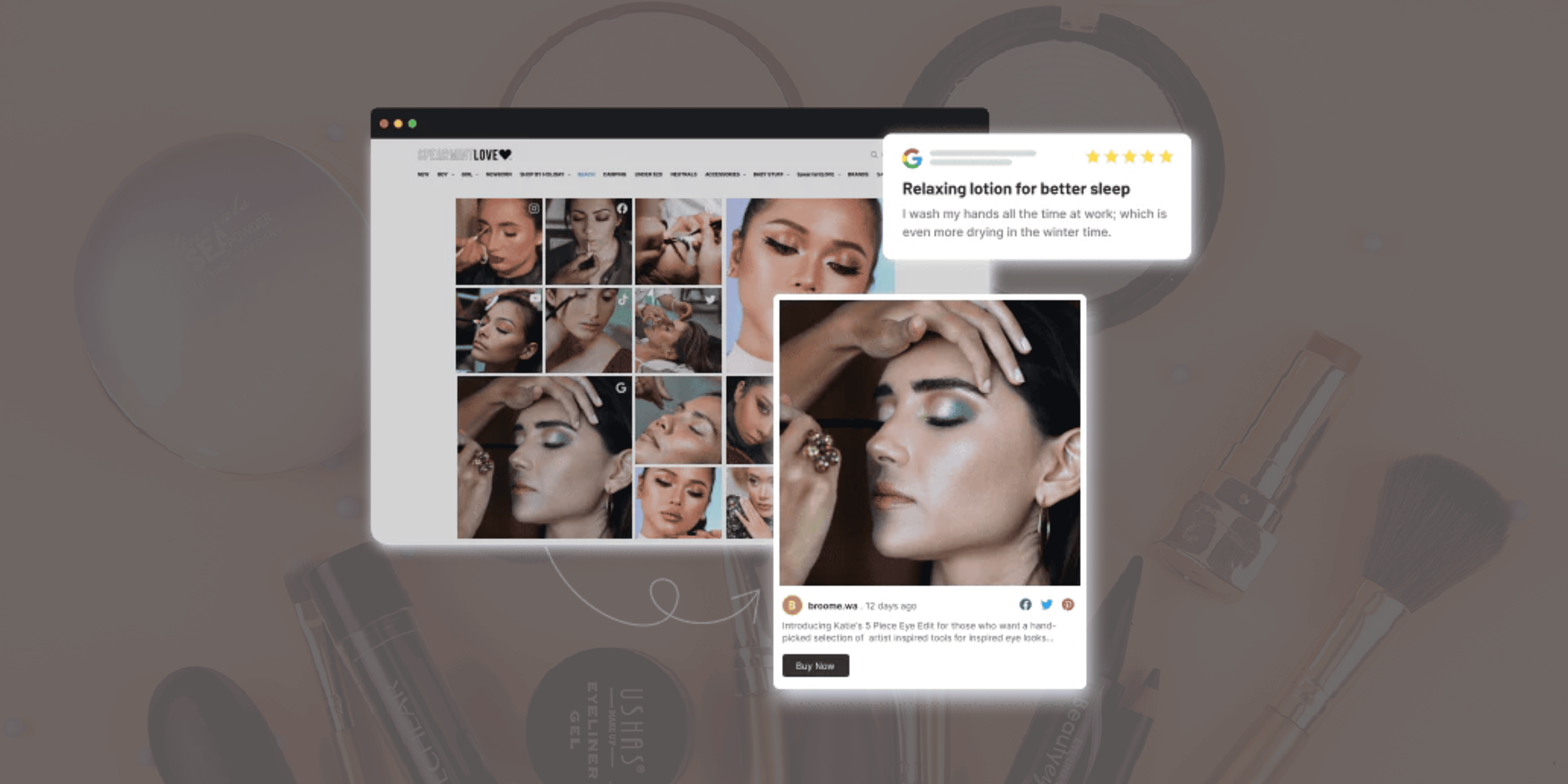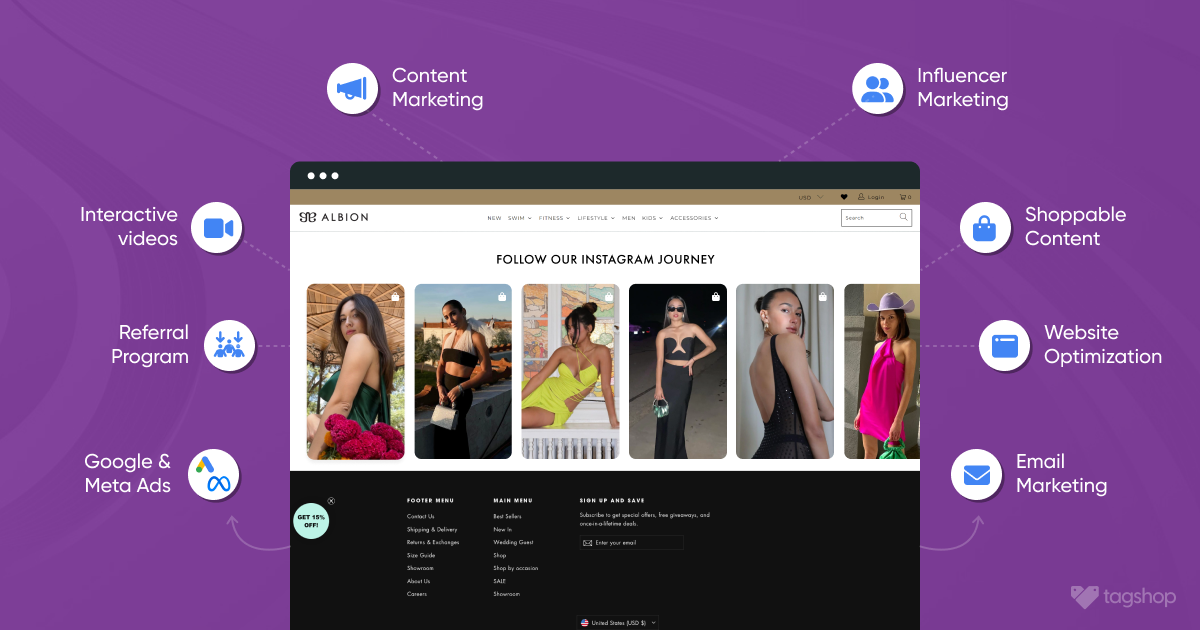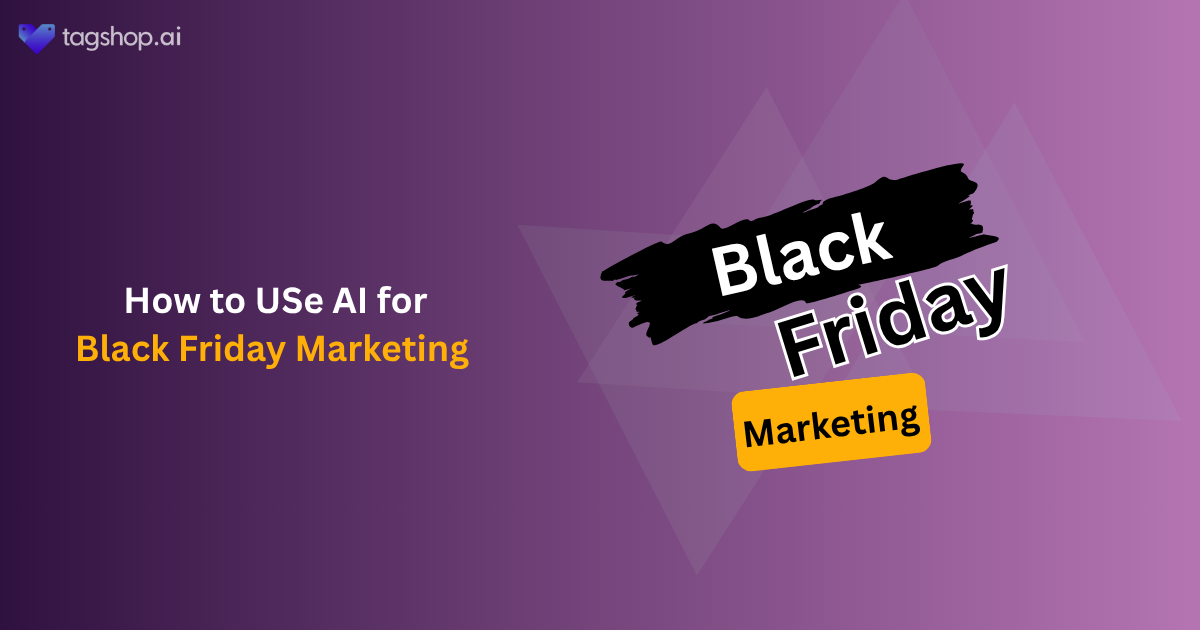20 Cosmetics and Beauty Marketing Strategies to Boost Your Sales
Navigating the beauty and cosmetic industry feels like a tightrope, with brands facing challenges like eCommerce competition, changing consumer preferences, and social media influence. However, they have captured a significant market space containing cosmetics, haircare, perfume, and skincare products. According to beauty consumer reports, over 60% of shoppers feel overwhelmed by choices, making it crucial for brands to carve out a distinctive voice.
With so much competition in this space, brands wonder how to stand out and attract customers. Amid this chaos, brands also need help shifting consumer values, including a demand for sustainability and transparency. The answer lies in beauty product marketing. Additionally, the rise of social media influencers complicates marketing strategies, as 49% of consumers trust recommendations from influencers over traditional marketing.
According to Statista.com, revenue generated from the beauty industry is estimated to reach $646.20 billion in 2025, growing at a yearly rate of 3.33%. Read this blog to learn 20 Beauty marketing strategies to connect effectively with their audience.
What is Beauty Marketing?
The strategic promotion and efforts in advertising applied by brands operating in the beauty and cosmetic industry to promote their products are termed Beauty Marketing. Simply, building connections between beauty brands and consumers is termed beauty marketing.

It encompasses various activities to develop brand awareness, attract customers, and drive sales within the highly competitive beauty market. To attract more leads and convert them into customers, you must show your product line’s benefits and unique selling points. Marketing beauty products need a deep understanding of the target audience’s demographics, preferences, and psychographics.
You can achieve beauty advertising through social media campaigns, beauty email marketing, influencer collaborations, and content marketing. Check out how the beauty industry marketing differs:
- Emotional And Visual Appeal- The marketing heavily relies on emotional connections and visual aesthetics. Consumers seek products that boost confidence and elevate appearance.
- Community Engagement- Beauty and cosmetic products often evoke emotions and personal experiences. Building a supportive customer base requires essential community interactions.
- Sustainability And Transparency- On transparency, there is a growing emphasis on ingredients, sourcing, and sustainability practices within the beauty industry. The key to success is maintaining this transparency in your marketing efforts.
20 Beauty Product Marketing Strategies in 2025
Now you’ve understood beauty marketing, let’s explore 20 powerful beauty and cosmetics marketing strategies to boost beauty product sales.
1. Affiliate Program
Embarking into the world of beauty and cosmetic brands with an affiliate program offers a unique chance to align oneself with the ever-evolving beauty industry. An affiliate program is the process in which an affiliate earns a commission for promoting another company’s products. To promote your beauty and cosmetic brand products, an affiliate program encourages brand advocates and influencers to expand your brand’s reach organically.
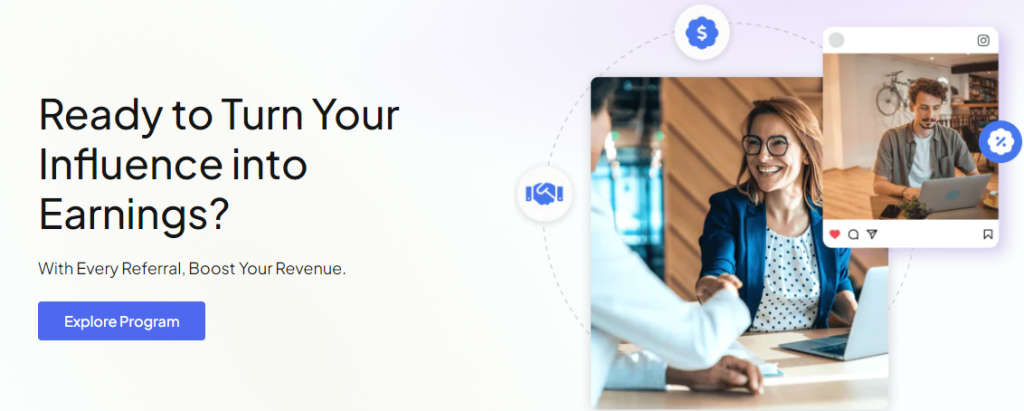
Many consumers, especially those shopping for beauty and cosmetic products, do extensive research online before purchasing. They compare products across multiple brands. Partnering with affiliates skilled in product comparison can help beauty brands attract customers.
Join Tagshop Affiliate Program
2. Generate AI UGC

AI-generated UGC is revolutionizing beauty marketing by enabling brands to create authentic, influencer-style content at scale. Using realistic AI avatars, brands can showcase product tutorials, reviews, and skincare routines without relying on real creators.
This allows for quick, cost-effective content production tailored to different skin types, age groups, and regions. Beauty brands can use AI UGC in ads, social media, and product pages to boost engagement and conversions. Tools like Tagshop make it easy to generate and manage high-quality AI videos, helping marketers scale faster with consistent messaging.
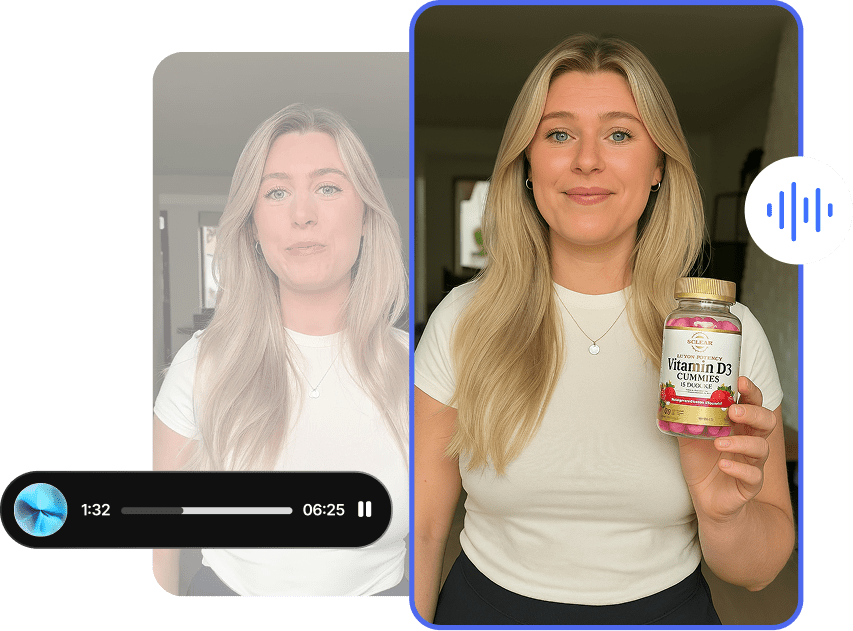
3. Beauty Email Marketing
One of the most profitable eCommerce promotion channels is beauty email marketing. To educate customers, develop trust, and offer personalized recommendations, it’s the perfect channel. According to the Litmus survey, each dollar spent on email marketing gets an ROI of 4200%. Email platforms like Beehiiv or MailerLite make it easier to design, automate, and analyze such campaigns effectively.
Begin by defining goals and growing your email list. You can do so by adding sign-up forms on your website and offering a lead magnet such as access to an ebook. Once you’ve built a substantial list, segmentize it by preferences, demographics, or behaviors. Use automation triggered by actions like cart abandonment or signups for further customization. The beauty and cosmetic industry is expected to provide more personalized and engaging content using AI for content personalization to see beauty marketing trends.
4. User-Generated Content Contests
In shaping brand perception and driving buying decisions, UGC for beauty and cosmetics plays a crucial role plays a crucial role. UGC is any content created and distributed by your brand consumers online. Customers often seek social proof, and UGC has become a savior for eCommerce brands. But only UGC isn’t enough; some beauty and cosmetics brand uses UGC contests to get more eyes and conversions.
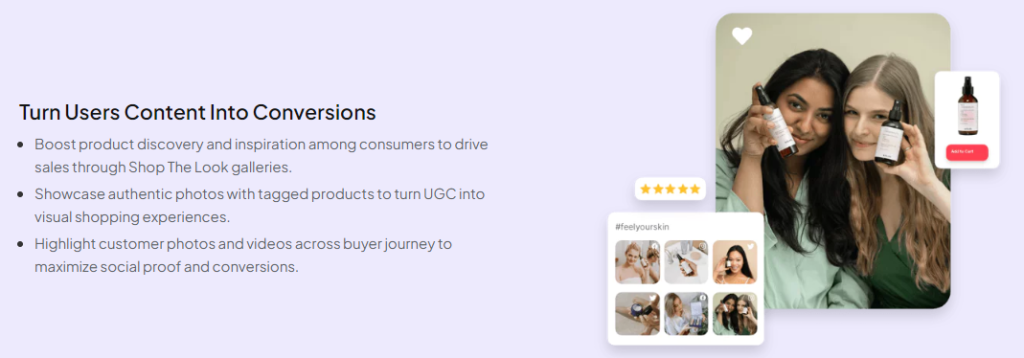
Utilize a UGC contest by creating a branded hashtag and ask customers to use it when sharing about your products. Give discounts, exclusive access, or free products in exchange for content.
For instance, MAC Cosmetics launched a marketing campaign called #MoodFlip, asking customers to post video makeovers using their cosmetics. Unboxing, testimonials, beauty tips, and product reviews can be excellent ideas for which you can reward winners.
5. Build A Community Of Customers
The relationship between brands and customers has been mostly transactional in the past. However, eCommerce brands that can turn their customers into a community enjoy far higher engagement rates, leading to increased sales. In today’s competitive landscape, understanding the state of customer experience has become vital. Brands that prioritize creating a positive, personalized experience build deeper, lasting connections with their customers..
You can also encourage customers on social media and in your own community forum. A beauty marketer encourages them to share their feedback, tips within groups, beauty inspiration, or on their social pages. By building strong communities and lasting relationships, remember that your main goal is to retain customers and strengthen their connection to your brand.
6. Optimize Social Media Profiles
For their beauty research, today’s customers use social media, and you, as a brand, need to optimize your social media profiles. Developing a solid social media presence for your beauty and cosmetic brand product is essential as beauty enthusiasts increasingly explore and purchase online products. Additionally, beauty products naturally have solid visual appeal, making them perfect for display on social platforms.
Here are some other cosmetics marketing ideas for building your beauty brand’s presence on social media:
Engage with your audience through DMs and comments.
Utilize Instagram stories to display your new product benefits.
To broadcast your story, host live video sessions.
7. Paid Advertising
Many types of paid advertising are available to market beauty products and cosmetic brands. Before finding the most effective one for your niche, sometimes you must try all formats. Track competitors’ actions first, find out the placement of their ads, and conduct test advertising campaigns.
Use several tools, such as setting up contextual advertising, adding products to Google Shopping, using dynamic remarketing, and engaging with Meta ads. Track and monitor the results of advertising campaigns and optimize them to understand their effectiveness better.
8. Live Streaming
Leveraging Live Streaming is another famous beauty and cosmetics advertising tip. For cosmetic and beauty marketing, select popular Live Streaming platforms like Facebook Live, Instagram Live, or YouTube Live. You can conduct live makeup tutorials, product demonstrations, or skincare routines to educate and engage your audience in real time.
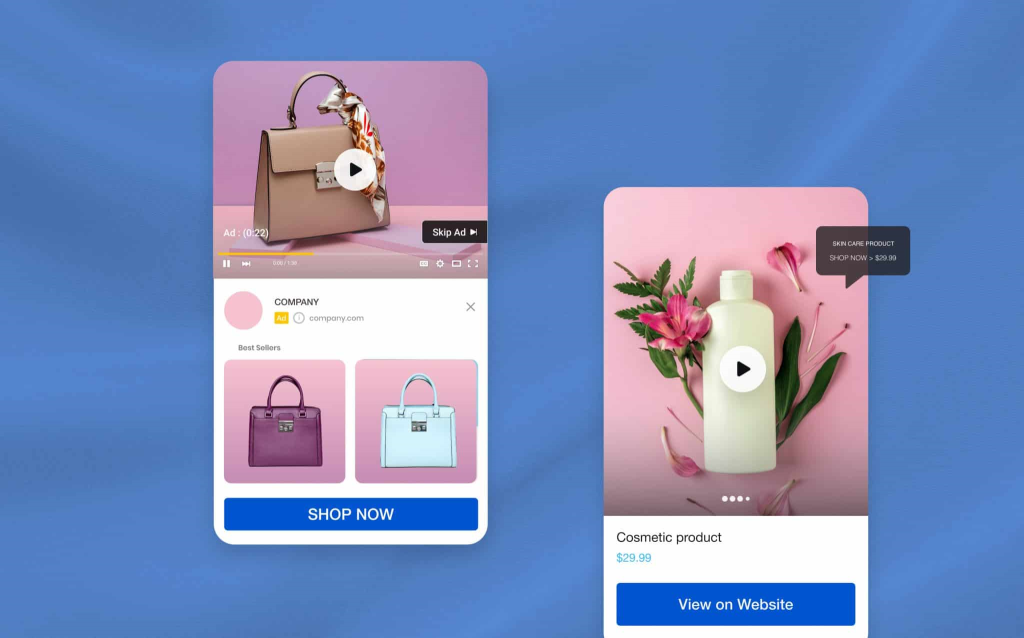
To address customer queries, provide expert advice, and create direct interaction with your audience by hosting live Q&A sessions. To create a sense of urgency, live streaming can also announce and show exclusive, time-sensitive promotions or product launches.
9. Give Seasonal Offers
For beauty and cosmetic brands, Instagram is a go-to platform, offering them a wide range of opportunities to show their products and engage with audience. When you announce seasonal offers on social media, then:
- Running seasonal offers creates a sense of urgency and generates excitement among your followers.
- Seasonal offers motivate users to like, comment, and share your posts, leading to higher engagement rates and increased brand visibility.
- Offering incentives can attract new followers and expand your social media community.
10. Leverage Product Sampling
You exponentially increase your chances of getting picked when you give a potential customer the best experience while they are deciding. What can be a better experience than letting them try the product through leveraging product sampling? Giving a potential buyer a glimpse of your product and convincing them is a modern technique for increasing sales.

This marketing strategy involves sending product samples to people and using them. Cosmetic or beauty marketing brands then ask for any form of UGC or reviews from them describing the product’s qualities. Displaying this UGC or review on their different eCommerce marketing fronts exhibits an authentic experience a user might have while using the product.
11. Include Testimonials in Your Product Pages
Undoubtedly, happy customers are your best advertisers, and testimonials are one of the strongest influences on a potential shopper’s decision-making process. Provide your customers with all the information and links they need about your product to reduce their research time. If someone writes an excellent review for one of your products, great!

Just add a link in the product description and see the magic happen. Especially for the beauty and cosmetic industry, video testimonials are particularly engaging. To promote testimonials for your beauty brand, videos of people trying out different products and recommending their favorites are great.
12. Loyalty Programs
The beauty and cosmetic industry is highly price-sensitive and competitive, making acquiring new customers costly. This makes retaining existing customers all the more critical. Loyalty programs can significantly impact customer retention and brand advocacy. Loyalty programs make customers feel valued and reward them for their continued support. In cosmetic and beauty brands marketing, it can take several forms:
- Points System- Make a system where customers earn points for every purchase.
- Tiered Memberships- With increasing benefits, create membership tiers as customers spend more.
- Exclusive Perks- To loyal customers, offer exclusive perks such as VIP access to events.
13. Limited Edition Products
Creating a sense of urgency and exclusivity with limited-edition products for beauty and cosmetic brands is a powerful tool. eCommerce brands can drive consumer interest and boost sales by offering unique items for a short time. This strategy taps into the psychology of scarcity, inspiring customers to make impulsive purchases before the items are gone.
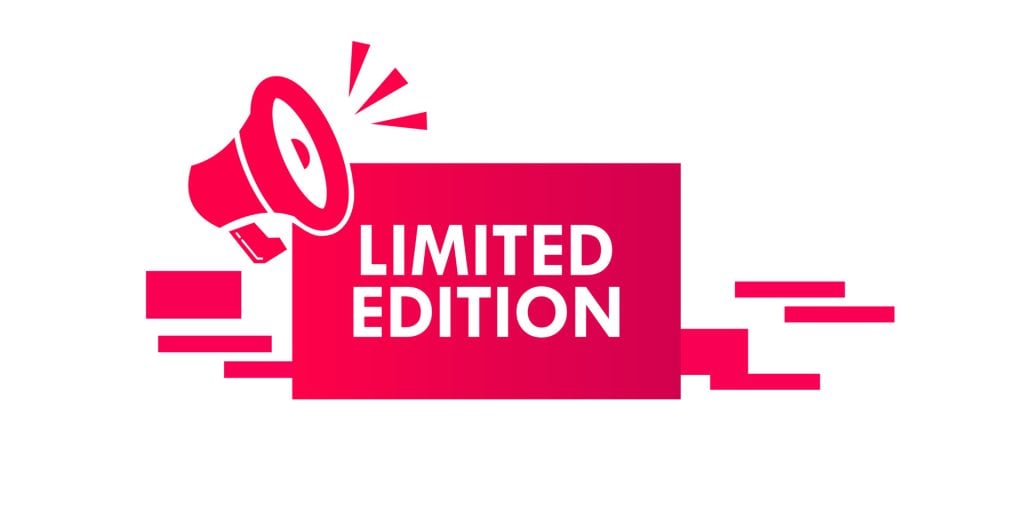
Limited edition products often feature collaborations, special packaging, or unique shades, enhancing their appeal. Additionally, they develop brand loyalty and engagement as consumers feel part of an exclusive community. Overall, limited edition products can elevate brand visibility and attract new customers.
14. Collaborate With Other Brands
One compelling marketing strategy for beauty and cosmetic brands is collaboration with other brands. Brand collaborations occur when two brands promote their products or services. The best brand collaborations help both brands increase social media engagement, reach new customers, boost sales, and achieve their brand goals. According to Later, collaboration with other brands can be up to 25x less expensive than digital marketing, saving finances.
Many beauty and cosmetic brands have tried to secure hype-generating collaborations with companies from different industries. These cross-brand collaborations are predicted to be a key promotional strategy for future brands. In a survey conducted by Glossy, over 38% of beauty brands said that collaborations are their most excellent marketing strategy.
These partnerships, like with cosmetic surgery seo company, UppercutSEO, can also help you improve your SEO and get more organic traffic. You can find beauty blogs for guest posting and then choose the best blog to publish your articles. This way, you’ll gain backlinks, which will increase your domain authority and help you rank higher in search results.
15. Hire Beauty Influencer
Hiring a beauty influencer helps cosmetic and beauty brands get their products in front of people who are most likely to buy them. Influencer advantage marketing lies in the authenticity and trust influencers develop with their followers. For beauty advice, over 42% of consumers trust influencer content. To help promote your products and services through their platforms, look for individuals with an existing following and share your values.
To a targeted audience, influencer marketing can spotlight your beauty brand effectively, but success depends on skill and strategy. Read below some tips for collaborating with a beauty influencer in beauty marketing:
- Team with influencers who align with your audience.
- Give influencers clear briefs and guidelines.
- Regularly monitor and analyze campaign performance.
16. Mobile App
Beauty and cosmetic brands must develop mobile apps to provide a holistic shopping experience because of the diversity of services and products. Complementing it with a handy makeup editing app lets shoppers preview shades and finishes in real time, smoothing the path to purchase.
Expecting the shopper’s journey to be highly convenient and engaging because consumers have become more picky and demanding. Apart from the quality, the service also matters for them. Partnering with a reliable mobile app development company can ensure the app meets these high expectations and delivers a seamless user experience.
17. Virtual Reality
To try something before purchasing it, people aren’t required to go to the store. To show consumers what their makeup looks like before they buy it, many renowned beauty brands are using virtual reality technology. This marketing strategy is already deeply penetrating the beauty industry, estimated to be worth more than half a trillion dollars. The beauty and cosmetic industry needs a level of accuracy that users don’t necessarily expect from an Instagram filter.
Out-of-the-box solutions like guided virtual try-ons provide beauty brands with an AI-powered tool that considers each customer’s facial features. This technology is especially popular with Gen Z, who are interested in using VR while shopping. Such usability and interest lead to more than double conversion rates.
18. Giveaways
One marketing strategy to promote a brand’s product or service is Giveaways to increase sales and brand awareness. Beauty and cosmetic brands usually use giveaways with digital content creators who promote the product to their followers.
To attract new leads, giveaways are a great way to catch the attention of people interested in our brand. Giveaways force your people to follow the brand page to be able to enter the contest. This marketing strategy will increase your engagement among current followers.
19. DIY Product Photography
In today’s beauty and cosmetic industry, the fierce competition means that simply having unique products isn’t enough. To differentiate and get your audience interested in your brand, you need to put in a lot of effort. To help brands carve out a spot in the beauty industry, they have tons of tools available in all sizes, including DIY product photography.
To create visually stunning content marketing that captivates your audience, invest in high-quality product photography. Hiring a professional beauty photographer or studio can make the difference you all need to capture shots that elevate your brand.
20. Participate in International Trade Shows
Participating in international trade shows is an excellent marketing strategy for the beauty marketing industry. These events offer a platform to showcase products to a global audience, boosting brand visibility and credibility. By networking with industry professionals, brands can develop valuable partnerships and gain insights into market trends.
Trade shows also facilitate direct consumer engagement, enabling brands to collect feedback and build a loyal customer base. Participation can enhance media exposure, attracting journalists and influencers. International trade shows are crucial for expanding reach, boosting brand reputation, and driving sales in the competitive beauty industry.
21. Use Flyer Templates to Promote Offers
Flyers are a simple yet effective way to promote beauty products — both in-store and online. You can distribute them locally, include them in packaging, or share digital versions on social media. With ready-made flyer templates or Flipsnack flipbook maker, you can easily create professional designs that showcase discounts, new arrivals, or events without needing a designer. They’re cost-effective and visually impactful — perfect for beauty marketing.
Final Verdict!
A multifaceted approach is required for effective beauty product marketing to stay ahead of the competition by adopting winning marketing strategies. You must blend marketing strategies like email marketing, paid advertising, influencer collaborations, live streaming, affiliate programs, and virtual reality. Each Cosmetics marketing strategy targets different goals and serves unique purposes, so pick strategies based on your top priorities.
What are you waiting for? Start implementing these marketing strategies for your beauty marketing today!

